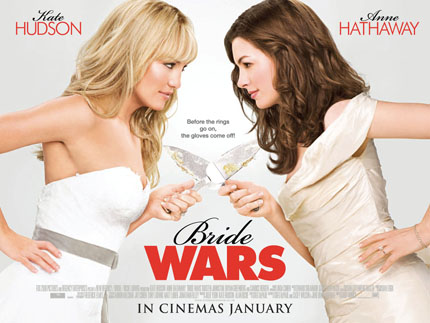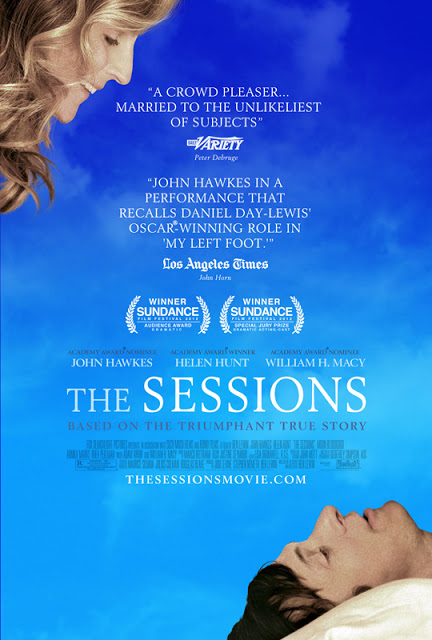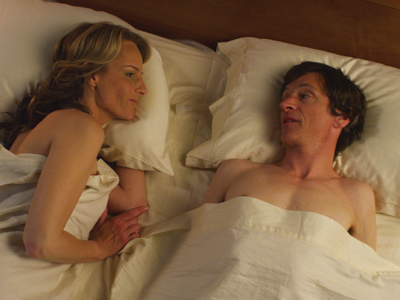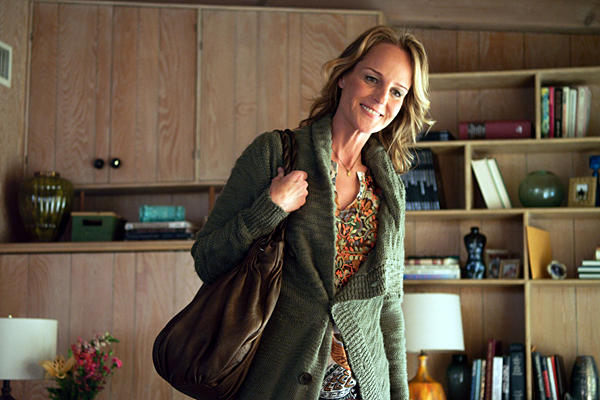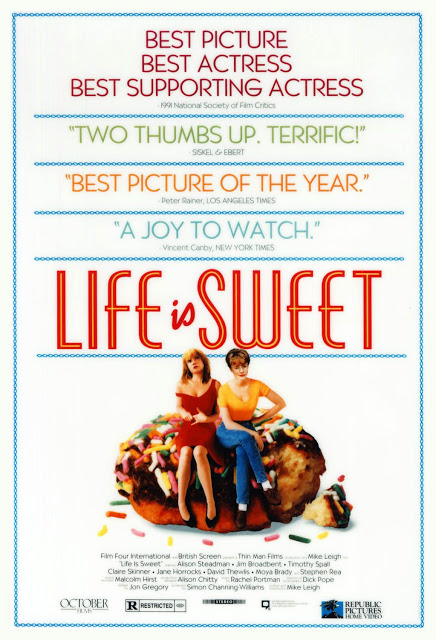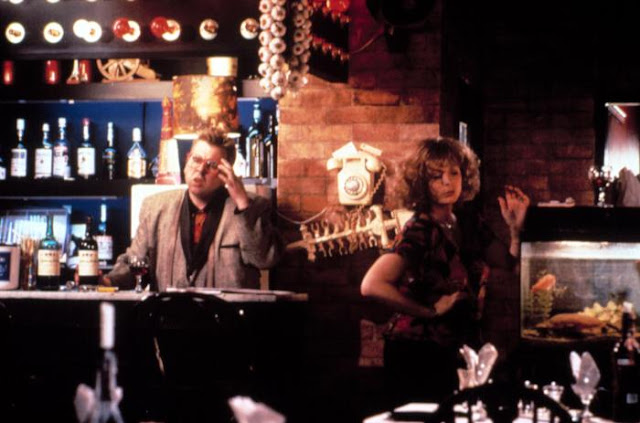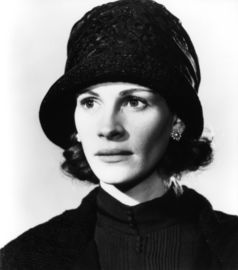For as long as there have been film-makers, they’ve seemingly been attempting to depict the Irish struggle for independence. Apart from the fact that a country in the midst of political strife always makes interesting viewing (see also: Israel, Palestine, the rest of the Middle East and the plethora of films produced each year about life in communist East Berlin), this may be down to timing.
The Easter Rising, when Ireland declared its intention of ending British rule over the country, took place in April 1916. The first commercial films, including DW Griffith’s seminal and hugely racist The Birth of a Nation (1914), were made in the same decade, meaning that the medium of film as a way to depict and interpret historical events through fictitious re-renderings of them, was created just in time to record the political strife that characterised Ireland in the twentieth century.
Since it’s women in politics week here on Bitch Flicks, I thought I’d offer up a quick overview of how women are depicted in some of the more well-known films about Ireland’s political history.
Wives and Girlfriends
One of the most important films about the division of Northern Ireland from the Republic (the country more usually referred to as Ireland), is Michael Collins, directed by Neil Jordan, released 1996.
In real life, Collins (played by Liam Neeson), was an Irish revolutionary leader who was crucial to the formation of the Irish Free State, which later became the Republic. He was assassinated in August 1922, while engaged to a woman called Kitty Kiernan, played on-screen by a particularly bland Julia Roberts.
 |
| Julia Roberts as Kitty Kiernana |
It’s almost a shame that Michael Collins is such an important film in terms of the depiction of “the Irish problem” on-screen because, by God, is Kitty a dull, poorly developed part. Not that I’d argue that the reduction of a potentially fascinating female role to that of an ornamental girlfriend is unusual.
Another notable, but much more interesting IRA girlfriend is Marcella in the 1984 drama Cal. In a moment that we might attribute to extreme post-traumatic stress, the IRA man who killed her Protestant police officer husband pursues the young widow and begins an affair with her. On-screen, and probably because Helen Mirren who plays Marcella can render anything believable, the relationship appears more moving than fucked up.
Much messier is Danny’s (Daniel Day-Lewis) torrid relationship with his former flame Maggie (Emily Watson who, like, Mirren, could make throwing away a cereal box seem moving if she put her mind to it). IRA code prevents Maggie, who married another IRA man while Danny was serving a prison sentence, from pursuing their relationship much as she’d like to. She’s likely to get attacked or worse if she does.
While quite different, these films do give some insight into what it has meant to become involved with an IRA man at different points in the movement, and also how filmmakers have changed their approach to depicting the women that did. Kitty Kiernan deserved better, that’s all I’m saying.
Lovers
Warning: spoilers ahead.
Neil Jordan’s 1992 film The Crying Game was a worldwide hit on release, and gives viewers one of the most interesting portraits of an IRA man and his lover. Forced to flee Northern Ireland after the botching the killing of a British soldier, Fergus (Stephen Rea) moves to London and gets involved with club singer Dil (Jaye Davidson), who’s keeping a secret. In her pants.
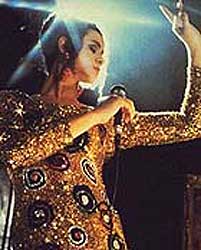 |
| Jaye Davidson as Dil |
In 1992 Dil, who is revealed as being transgendered a short while into her love affair with Fergus, was one of the few unprejudiced depictions of a transgendered woman on-screen. Her sexuality, and indeed her penis, though revealed, are never made to be a punch line. In terms of mainstream film-making this was even more rare in the 90s than it is today.
As well as marking a positive depiction of transgender on-screen, Dil’s status as a trans-person is important because it marks Fergus’ movement away from the militant Irish Catholicism that has coloured his life so far, including his relationship with his ex-girlfriend, Jude (Miranda Richardson).
By literally and figuratively embracing Dil, Fergus is shown to be developing as a person in a way that it’s suggested the republican movement may need to.
It’s interesting that both The Crying Game and Michael Collins were written and directed by the same dude. His fictional ladies, though also both involved with IRA men, are way more interesting to watch.
Allies
Ken Loach’s 2006 historical film The Wind That Shakes The Barley gives viewers the chance to see a part of the Irish republican movement that’s rarely depicted in cinema, the Cumann na mBan.
CnamB was founded in 1914 as an all-female auxiliary to the recently formed Irish Volunteers, which aimed to secure liberty for Ireland with the mandate that they were willing to use force if need be. Though they rarely get a nod in the media, the group are still in existence and listed by the UK Terrorism Act still as a “Domestic Terrorist Group”.
Set during the Irish War of Independence, the film gives us Sinead (Orla Fitzgerald), a member of the CnamB who refuses to be a victim. She remains politically and militantly active as Ireland suffers under the British occupation that is increasingly marked by vicious attacks by the notorious Black and Tans, and refuses to allow the men she’s allied with to fight the country’s battles without her.
 |
| Orla Fitzgerald as Sinead |
It’s this engagement that eventually mean the character of Sinead will come to symbolise the country’s determination and hard-won independence in the eyes of the viewer.
Now, if Ken Loach would just turn his attention to immortalising a couple of real-life female revolutionaries, Maud Gonne and Countess Markiewicz, on-screen, all would be almost right in the world. The world of depictions of Irish women on-screen, anyway.
Victims
The 1970 drama Ryan’s Daughter is set in the fictitious Kerry village of Kirrary in 1916. Though the film is in fact a loose adaptation of Gustave Flaubert’s novel Madame Bovary, the depiction of events in a village and era so rife with anti-British sentiment are accurate enough to use here.
 |
| Sarah Miles as Rosy Ryan |
When she begins an affair with a British Army officer, spoiled beauty Rosy Ryan (played by Sarah Miles), becomes not only a victim of public shaming by local villagers who drag her into the street, strip and beat her, before cutting all her hair off, she also becomes a victim of her own father’s greed.
Because although Rosy is engaging in adultery with a man who symbolises the British occupation of Ireland, she has not been informing him about the activities of local IRA men (watch the film and it’s clear she’s far too self-obsessed to take any notice of what anyone else is up to). It’s her father, Tom, who hears everything by virtue of being the local publican and sells the information to British soldiers at the local army base.
A betrayal of his country, Tom’s collaboration is neatly juxtaposed on-screen with the villagers’ acts of violence against Rosy, whose sexual attraction to a British soldier is seen as every bit as treacherous as her supposedly having informed on them.
She’s a victim then of the republican villagers who attack her, the men who purport to love her but refuse to protect her in the face of this violence, and – always dangerous for a woman on-screen – her libido.
It’s one of the more depressing movies in the genre.
Mothers
Most mothers in political films about the state of Ireland, and particularly Northern Ireland, have tended to be either ardent supporters of a militant political organization who want their sons to get out there and do their bit, or more stereotypical mothers who worry. Inarguably, women raising children in the middle of a civil war zone have a lot more to worry about.
 |
| Helen Mirren as Kathleen Quigly and Fionnula Flanagan as Annie Higgins |
Some Mother’s Son (1996) is based on the true story of the 1981 Hunger Strikes in which republican prisoners starved (sometimes to death) in protest against the British presence in Northern Ireland, and gives viewers two mothers to consider.
Kathleen Quigley (Helen Mirren) is mother to a man who has kept his IRA involvement secret from her. When he is arrested, she’s torn between her love and loyalty towards her son, and her disgust for the organization. When the Hunger Strikes begin, she is determined to do whatever is necessary to save her son.
Annie Higgins (Fionnula Flanagan), meanwhile, is a hardline republican, who is able to completely support her own son’s actions, but is eventually forced to watch him die at the hands of the British Army.
Neither woman is depicted as a saint, stereotype or, unusually, as a symbol for the struggles of Northern Ireland as a whole, which makes the film not only more realistic but also far more moving.
Cruella de Ville
I’ve already mentioned that I think Neil Jordan can write a pretty rocking fictional woman’s part. It’s possible that I’m misinterpreting Miranda Richardson’s role as country girl turned villainess Jude in The Crying Game. That’s her there, rocking Uma Thurman’s iconic hairstyle a full two years before Pulp Fiction hit the big screen.
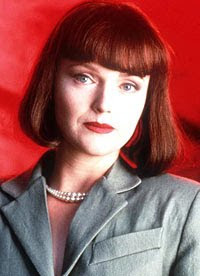 |
| Miranda Richardson as Jude in The Crying Game |
Like Orla in The Wind that Shook the Barley, Jude is an ally to the IRA men in the film. Her initial job, while still blonde and clad in double denim, is to lure Forest Whittaker’s British soldier Jody back to her place so the republicans can take him hostage. (This flirty technique was considered so immoral that the IRA swiftly banned members from using it.)
It’s only later, after her safehouse is bombed by the British army, killing some of her cohorts and forcing her boyfriend Fergus to flee Ireland, that she’s given a make-over that most fairy tale villains might deem “a bit over the top.”
From her jet black, bluntly cut bob to the razor sharp suits she adopts, there is no part of Jude’s later characterization – which will include threatening her ex, then shrieking the usually comforting Roman Catholic motto, “Keep the Faith!” as she leaves the room – that implies she’s anything less than evil.
Among academics this depiction of a female IRA member as having no redeeming qualities at all is considered one of the most misogynistic to have appeared.
Conclusion
There are few genres that are depicting women in as complex and interesting a manner as we deserve to be. The political nature of the films I’ve described here does mean that that the parts being written usually depict a certain amount of emotional and social complexity that other genres can lack.
There’s none I wouldn’t recommend to you, if you’re interested in the development of Irish politics and the people involved in it but what I would say is that in spite of feminism in Ireland developing more slowly than in other parts of the first world, women have never been sidelined from the revolution.
We had women in the Cumann na mBan fighting alongside men when the country overthrew British rule in the 1920’s. Countess Markiewicz and Maud Gonne are arguably as important revolutionary figures as the men they campaigned alongside, but who are more usually referred to and depicted on film.
And – though there are a plethora of films depicting the mothers, wives, girlfriends or lovers who have loved the men who’ve fought for Ireland – we’re still waiting for the films about the lives of these women to be made.
Alisande Fitzsimons blogs regularly at xoJane UK. She can also be found tweeting about Ireland and movies at @AlisandeF



